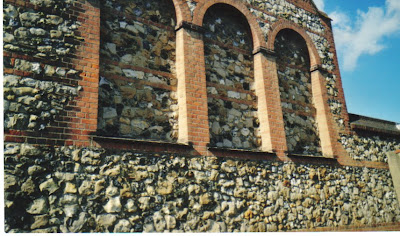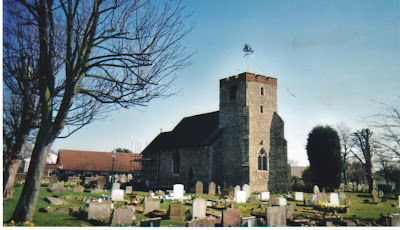
1912a. Royal village day Nursery is non-Jewish and secular 2002 organization housed in the former Alexandra Road Hebrew Synagogue (not a tautology it means Orthodox services in Hebrew not English). The sides are of pale red bricks and simple windows, but this front above high steps and Hebrew inscription includes a rose and other oolite windows in darker red Herringbone and English Bond brickwork. The Hebrew services continue at a 1967 building elsewhere.












































